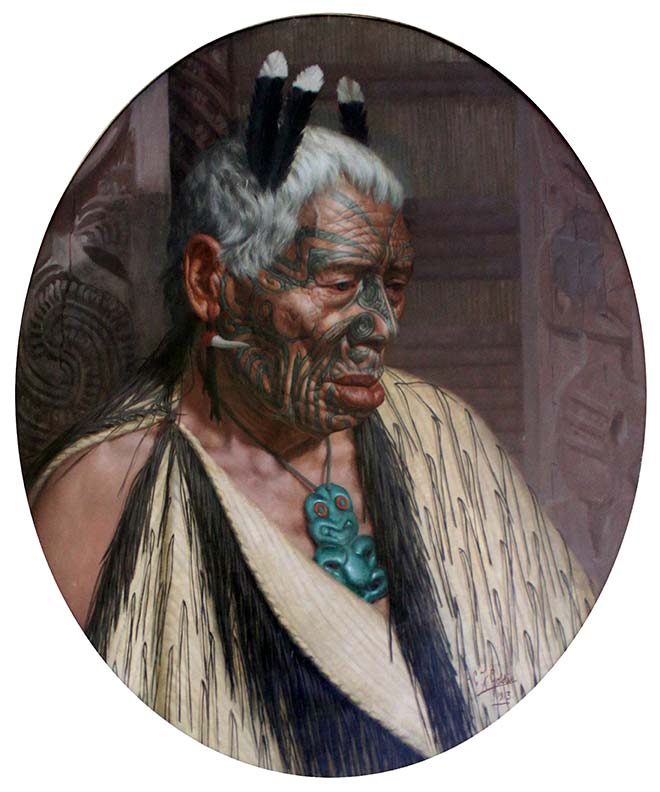
Charles Goldie's portrait of Tumai Tawhiti, completed in 1913, reflected the prevailing view that Māori were a 'dying race' – which is also suggested by the title Goldie gave the painting. This encouraged a romantic sentimentality towards Māori from the end of the 19th century. Looking for a distinctive New Zealand form of cultural expression, a number of Pākehā painters, poets and novelists focused their work on Māori subjects. Goldie was perhaps the best-known of these, but they also included the poet and novelist Arthur Adams and the journalist and historian James Cowan.
Using this item
Aigantighe Art Gallery
Oil on canvas by Charles Goldie
This item has been provided for private study purposes (such as school projects, family and local history research) and any published reproduction (print or electronic) may infringe copyright law. It is the responsibility of the user of any material to obtain clearance from the copyright holder.






Add new comment